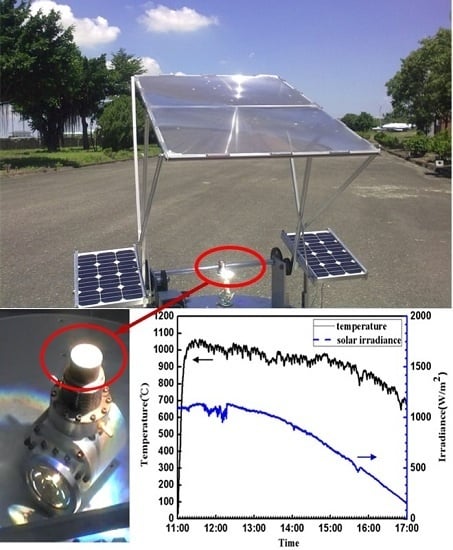Biaxial-Type Concentrated Solar Tracking System with a Fresnel Lens for Solar-Thermal Applications
Abstract
:1. Introduction
2. Experimental Methods and Apparatus
3. Results and Discussions
4. Conclusions
Author Contributions
Conflicts of Interest
References
- BCC Research, Global Markets for Industrial and Utility Solar Thermal Technologies. Available online: http://www.bccresearch.com/report/EGY070A.html/ (accessed on January 2010).
- Ross, B. Status of the emerging technology of stirling machines. IEEE AES Syst. Mag. 1995, 10, 34–39. [Google Scholar] [CrossRef]
- Finat, A.G.; Liberali, R. Concentrating So-Lar Power: From Research to Implementation; European Commission: Europe, 2007. [Google Scholar]
- Ortega, J.I.; Burgaleta, J.I.; Téllez, F.M. Central receiver system solar power plant using molten salt as heat transfer fluid. J. Sol. Energy Eng. 2008, 130, 024501. [Google Scholar] [CrossRef]
- Singh, N.; Kaushik, S.C.; Misra, R.D. Ex-ergetic analysis of a solar thermal power system. Renew. Energy 2000, 19, 135–143. [Google Scholar] [CrossRef]
- Stine, W.B.; Diver, R.B. A Compendi-um of Solar Dish/Stirling Technology; Report SAND93-7026 UC-236; Sandia National Laboratories Technical Library: Albuquerque, NM, USA, 1994.
- Tavakolpoura, A.R.; Zomorodiana, A.; Golneshanb, A.A. Simulation, Construction and Testing of a Two-Cylinder Solar Stirling engine Powered by a Flat-Plate Solar Collector without Regenerator. Renew. Energy 2008, 33, 77–87. [Google Scholar] [CrossRef]
- Lane, N.W.; Beale, W.T. A Biomass-Fired 1 KW Stirling Engine Generator and Its Ap-plications in South Africa. In Proceedings of the 9th International Stirling Engine Conference, Athens, South Africa, 2–4 June 1999; pp. 1–7.
- Price, H.; Lüpfert, E.; Kearney, D.; Zarza, E.; Mahoney, R. Advances in parabolic trough solar power technology. J. Sol. Energy Eng. 2002, 124, 109–125. [Google Scholar] [CrossRef]
- Hirata, K. Development of a Small 50W Class Stirling Engine. In Proceedings of the 6th International Symposium on Marine Engineering, Tokyo, Japan, 23–27 October 2000.
- Cinar, C.; Karabulut, H. Manufacturing and testing of a gamma type Stirling engine. Renew. Energy 2005, 30, 57–66. [Google Scholar] [CrossRef]
- Kongtragool, B.; Wongwises, S. A review of solar-powered Stirling engines and low temperature differential Stirling engines. Renew. Sustain. Energy Rev. 2003, 7, 131–154. [Google Scholar] [CrossRef]
- Mraz, S.J. Infinia uses Stirling cycle for solar power and air conditioning. Available online: http://machinedesign.com/energy/infinia-uses-stirling-cycle-solar-power-and-air-conditioning (accessed on 11 August 2011).
- Chaudhari, M.; Waghmare, A.; Fernandes, S.; Sinkar, S. Dual axes maximum light intensity tracker. Int. J. Emerg. Sci. Eng. 2014, 3, 388–391. [Google Scholar]
- Baker, K.A.; Karp, J.H.; Tremblay, E.J.; Hallas, J.M.; Ford, J.E. Reactive self-tracking solar concentrators: Concept, design, and initial materials characterization. Appl. Opt. 2012, 51, 1086–1094. [Google Scholar] [CrossRef] [PubMed]
- Edwards, B.P. Computer based sun following system. Sol. Energy 1978, 21, 491–496. [Google Scholar] [CrossRef]
- Rumala, S.S.N. A shadow method for auto-matic tracking. Sol. Energy 1986, 37, 245–247. [Google Scholar] [CrossRef]
- Lynch, W.A.; Salameh, Z.M. Simple electro-optically controlled dual-axis sun tracker. Sol. Energy 1990, 45, 65–69. [Google Scholar] [CrossRef]
- Poulek, V.; Libra, M. New solar tracker. Sol. Energy Mater. Sol. Cells 1998, 51, 113–120. [Google Scholar] [CrossRef]
- Chin, C.S.; Babu, A.; McBride, W. Design, modeling and testing of a standalone single axis active solar tracker using MATLAB/Simulink. Renew. Energy 2011, 36, 3075–3090. [Google Scholar] [CrossRef]
- Clifford, M.J.; Eastwood, D. Design of a novel passive solar tracker. Sol. Energy 2004, 77, 269–280. [Google Scholar] [CrossRef]
- Tripanagnostopoulos, Y.; Siabekou, C.; Tonui, J.K. The Fresnel lens concept for solar control of buildings. Sol. Energy 2007, 81, 661–675. [Google Scholar] [CrossRef]
- Xie, W.T.; Dai, Y.J.; Wang, R.Z.; Sumathy, K. Concentrated solar energy applications using Fresnel lenses: A review. Renew. Sustain. Energy Rev. 2011, 15, 2588–2606. [Google Scholar] [CrossRef]
- Chong, K.K.; Wong, C.W. General formula for on-Axis sun-tracking system. In Solar Collectors and Panels, Theory and Applications; InTech: Rijeka, Croatia, 2010. [Google Scholar]
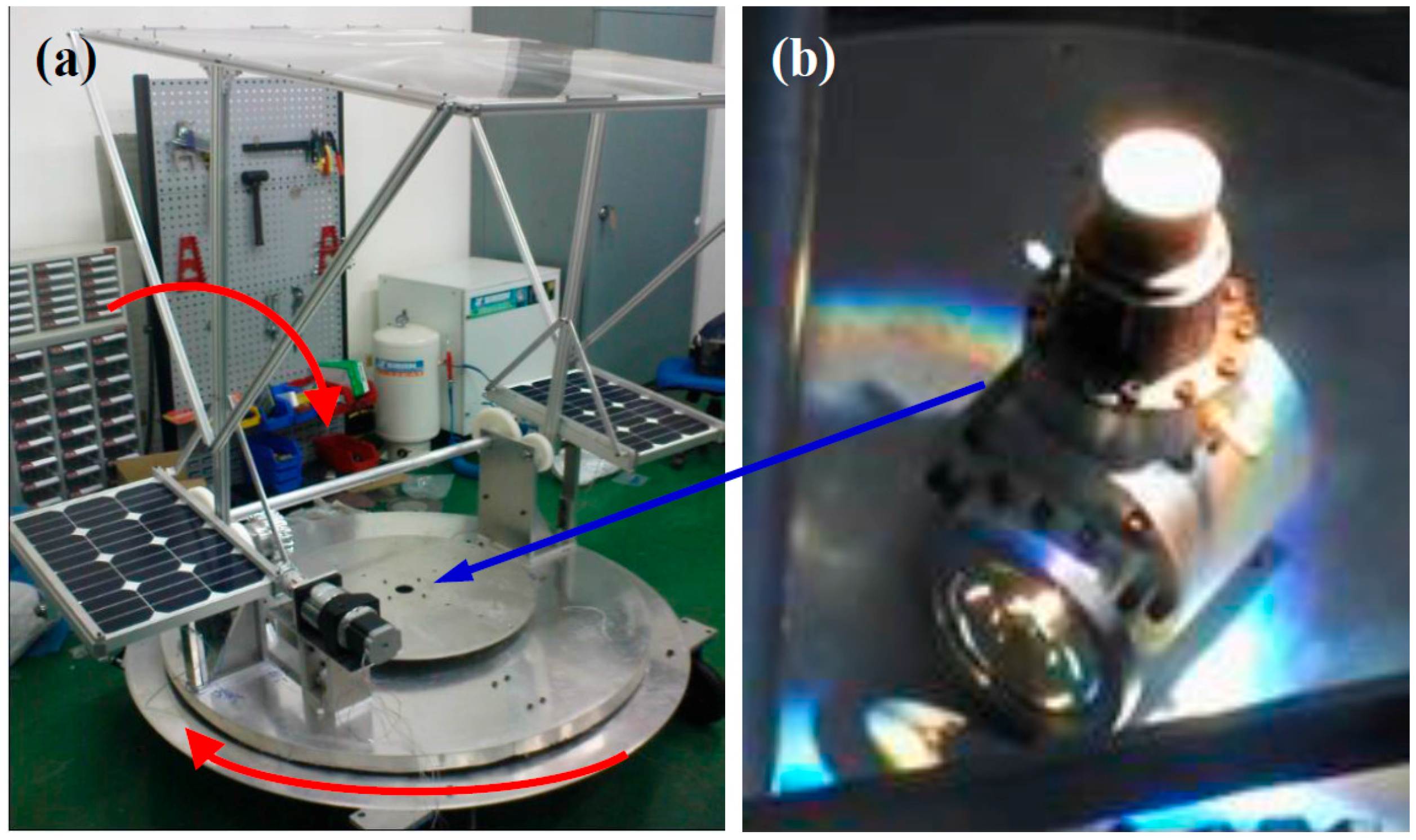
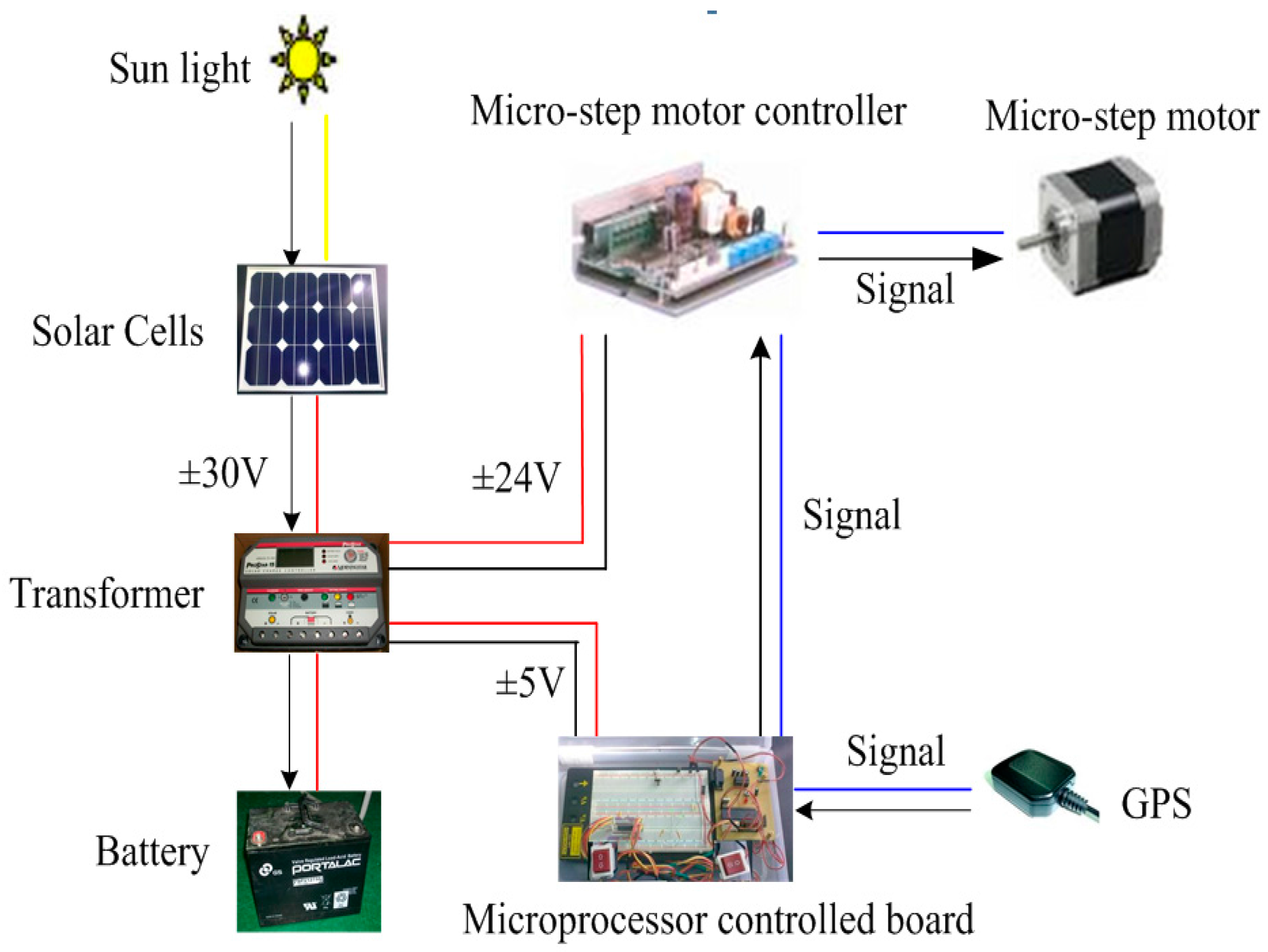
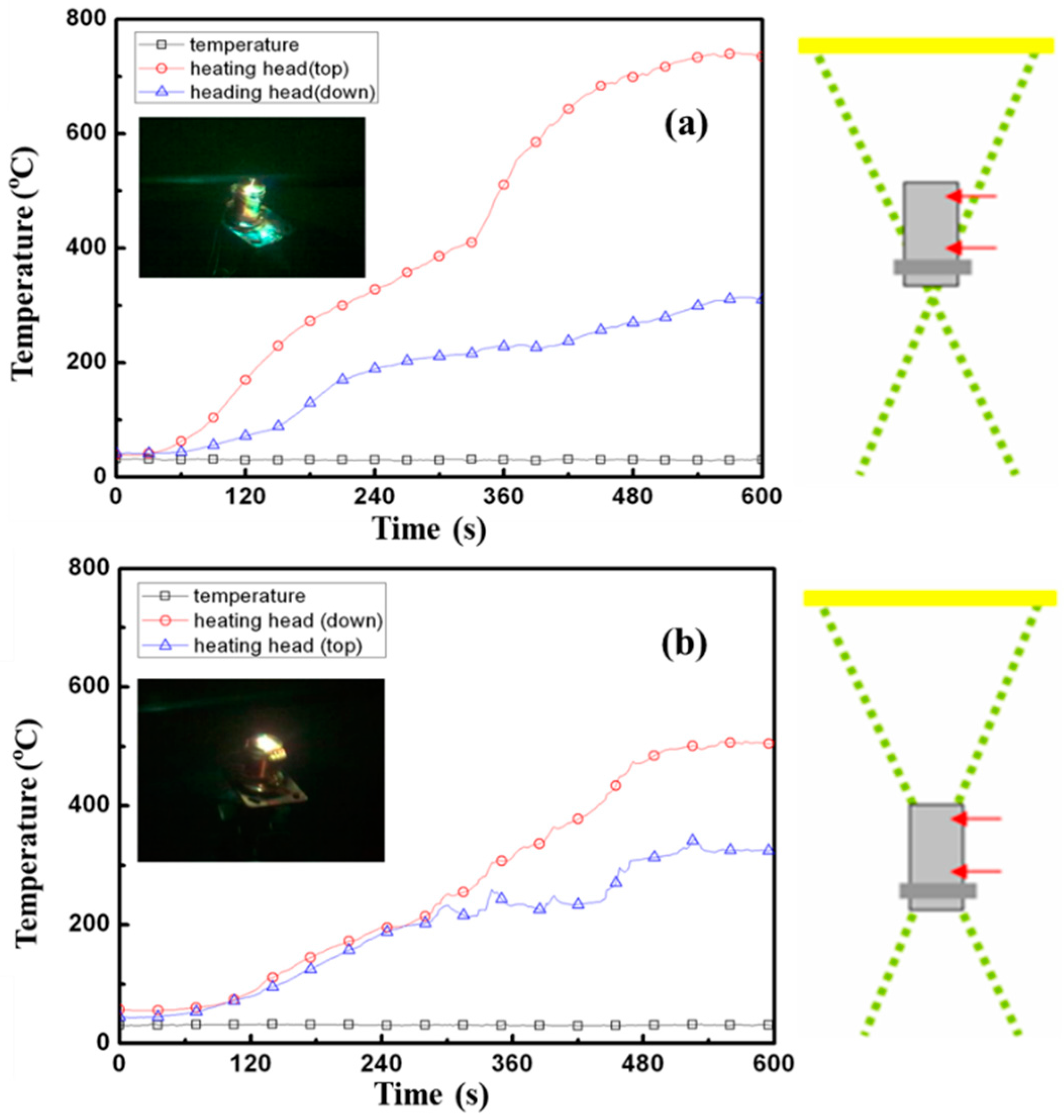
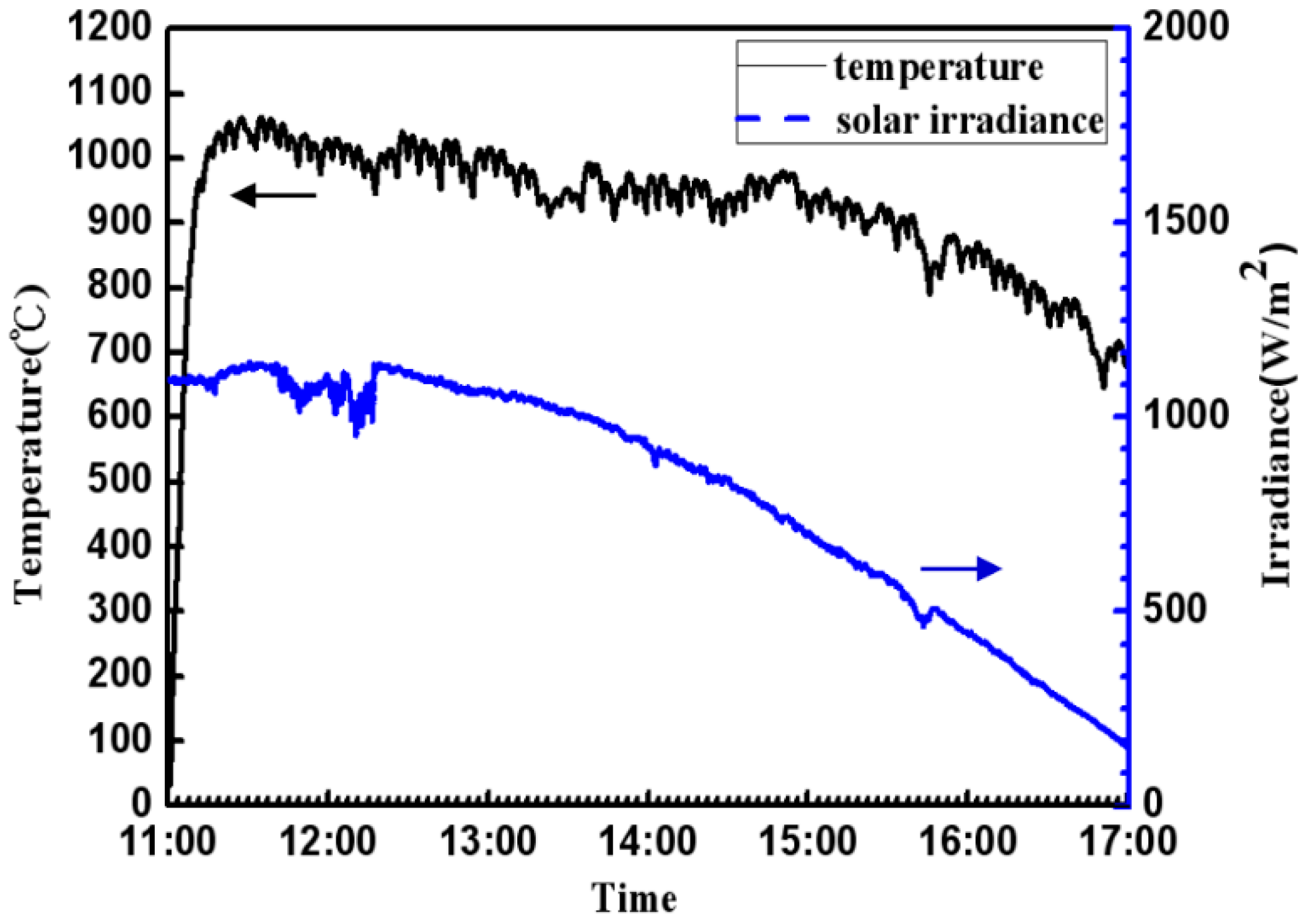
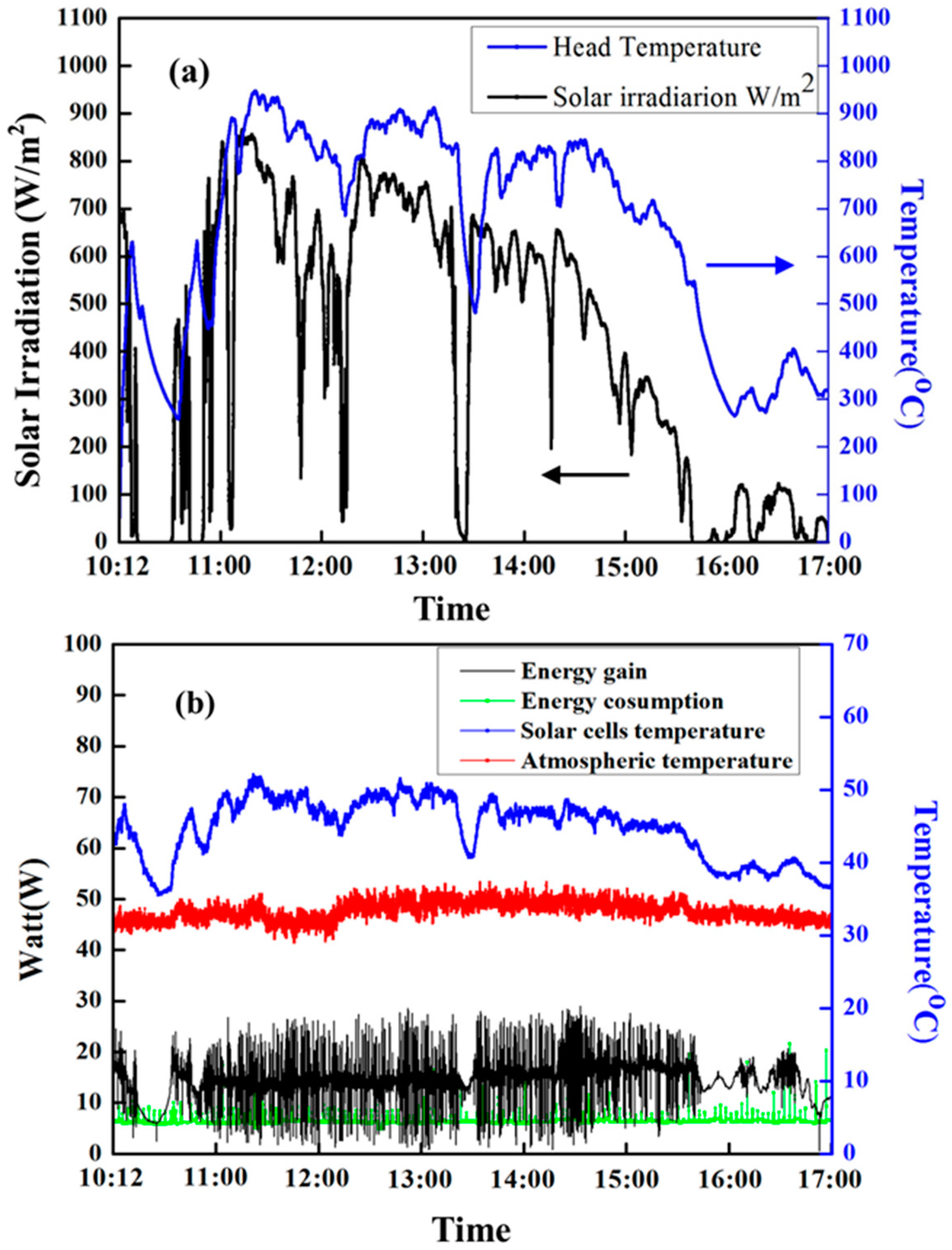
© 2016 by the authors; licensee MDPI, Basel, Switzerland. This article is an open access article distributed under the terms and conditions of the Creative Commons Attribution (CC-BY) license (http://creativecommons.org/licenses/by/4.0/).
Share and Cite
Cheng, T.C.; Yang, C.K.; Lin, I. Biaxial-Type Concentrated Solar Tracking System with a Fresnel Lens for Solar-Thermal Applications. Appl. Sci. 2016, 6, 115. https://doi.org/10.3390/app6040115
Cheng TC, Yang CK, Lin I. Biaxial-Type Concentrated Solar Tracking System with a Fresnel Lens for Solar-Thermal Applications. Applied Sciences. 2016; 6(4):115. https://doi.org/10.3390/app6040115
Chicago/Turabian StyleCheng, Tsung Chieh, Chao Kai Yang, and I Lin. 2016. "Biaxial-Type Concentrated Solar Tracking System with a Fresnel Lens for Solar-Thermal Applications" Applied Sciences 6, no. 4: 115. https://doi.org/10.3390/app6040115
APA StyleCheng, T. C., Yang, C. K., & Lin, I. (2016). Biaxial-Type Concentrated Solar Tracking System with a Fresnel Lens for Solar-Thermal Applications. Applied Sciences, 6(4), 115. https://doi.org/10.3390/app6040115





